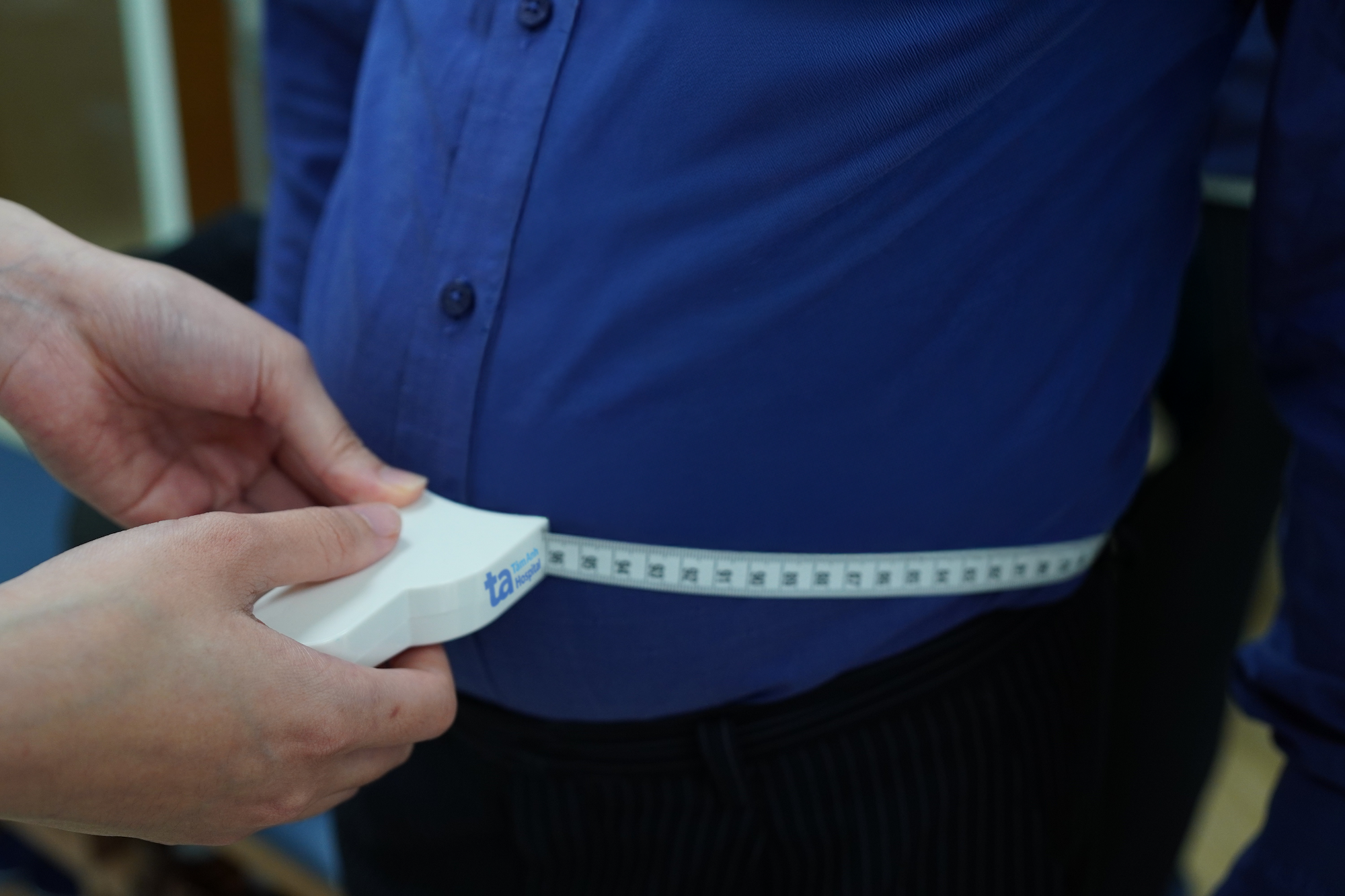Waist circumference directly reflects the amount of fat accumulated around the abdomen, an area closely linked to metabolic health. This fat consists of two main types: subcutaneous fat, located directly under the skin of the abdomen and palpable by hand; and visceral fat, which surrounds internal organs such as the liver, stomach, and intestines. Visceral fat is linked to conditions like high cholesterol, high blood pressure, and type 2 diabetes.
Doctor Dinh Nhu Quynh, from the Endocrinology - Diabetes Department at Tam Anh General Hospital in Hanoi, explains that a larger waist circumference indicates a higher risk of visceral fat accumulation, increasing the risk of metabolic disorders and cardiovascular diseases like heart attacks.
Doctor Quynh provides guidance on measuring waist circumference to determine the risk of abdominal fat.
Measuring your waist
First, locate the highest point of your pelvic bone and the lowest point of your rib cage. Then, exhale normally to relax your body. Place a tape measure horizontally midway between these two points and wrap it around your waist, loose enough to slip a finger underneath. Finally, read and record the measurement.
If you don't have a tape measure, place your hands around your waist, aligning them with your navel. Then, use your finger joints or the length of your palm to estimate the circumference. This method isn't as accurate as using a tape measure, but it helps track changes in abdominal size over time.
 |
A patient having their waist measured with a specialized tape measure. Photo: *Tam Anh General Hospital* |
When to measure
The timing significantly affects the accuracy of waist measurements. Measure in the morning after waking up, on an empty stomach, before eating or drinking. This minimizes the influence of food, beverages, and digestive fluctuations throughout the day, providing the most accurate reflection of abdominal fat. Maintain a consistent measurement time for accurate comparisons over time.
Calculating your waist-to-height ratio
Once you have your waist measurement, measure your height (using the same unit, e.g., cm or inches). Divide your waist measurement by your height. The result is your waist-to-height ratio, a key indicator for assessing health risks related to abdominal fat.
According to Doctor Quynh, a higher ratio signifies greater visceral fat accumulation and a higher risk of being overweight or obese. Compare your ratio to the following standards for an initial assessment of your current health status:
A ratio of 0.4-0.49 indicates a healthy range; 0.5-0.59 suggests a high risk, requiring dietary and exercise adjustments, and regular monitoring. A ratio of 0.6 or higher indicates a very high risk, necessitating weight loss treatment and waist circumference reduction to mitigate cardiovascular and metabolic health risks. For example, if your waist is 96.5 cm and your height is 170 cm, the ratio is 96.5 / 170 = 0.57, placing you in the high-risk category for being overweight or obese.
For accurate waist measurement and a comprehensive health assessment, Doctor Quynh recommends visiting medical facilities or hospitals with specialized weight management and obesity treatment departments. In addition to precise waist measurements, doctors can use specialized equipment to measure visceral fat, metabolic indicators, and body composition. This allows for a comprehensive evaluation of abdominal fat, metabolic risks, and personalized advice tailored to individual body conditions and weight management goals.
Mai Anh
| Readers can submit questions about endocrine diseases here for doctors to answer. |












